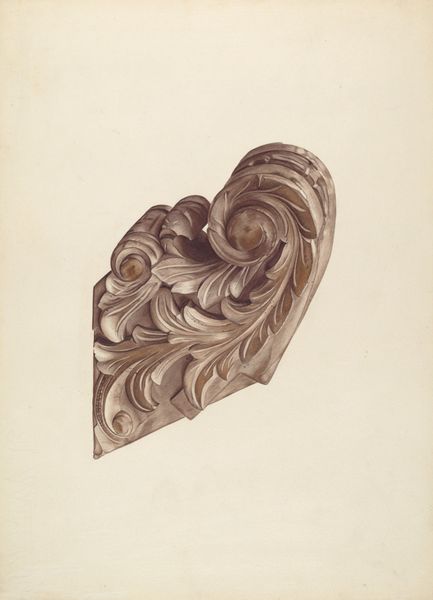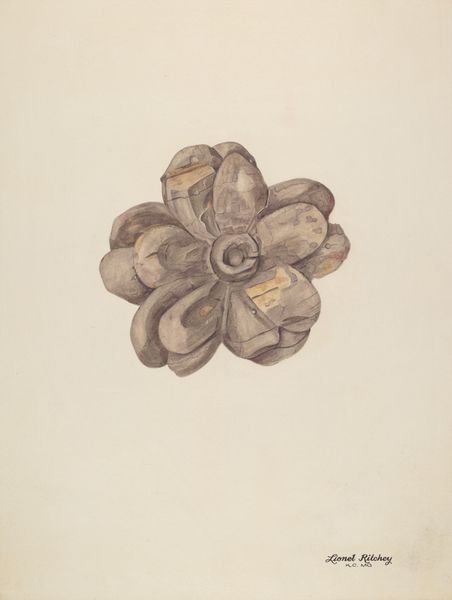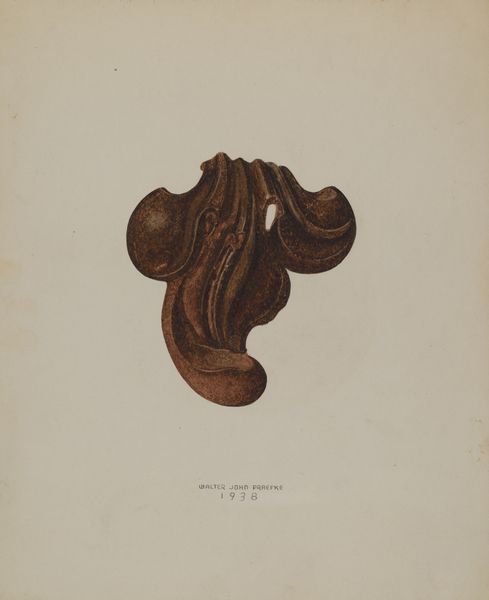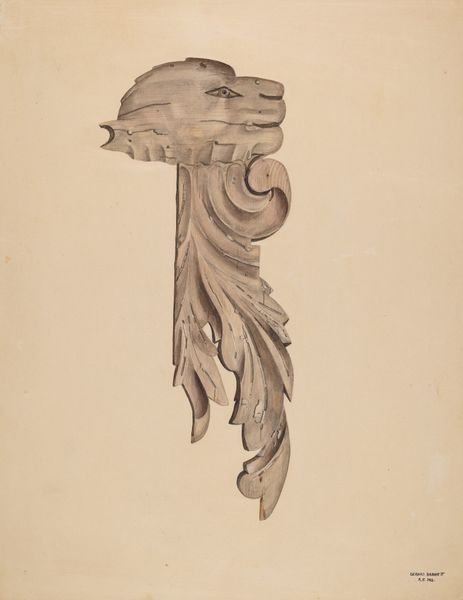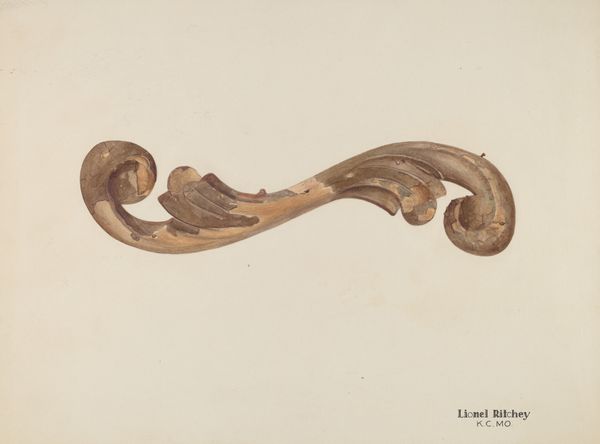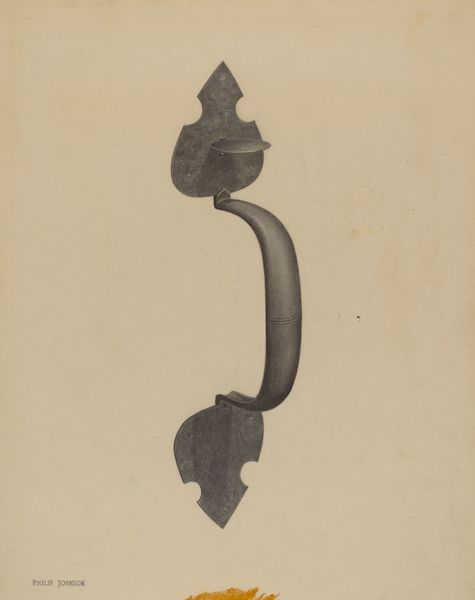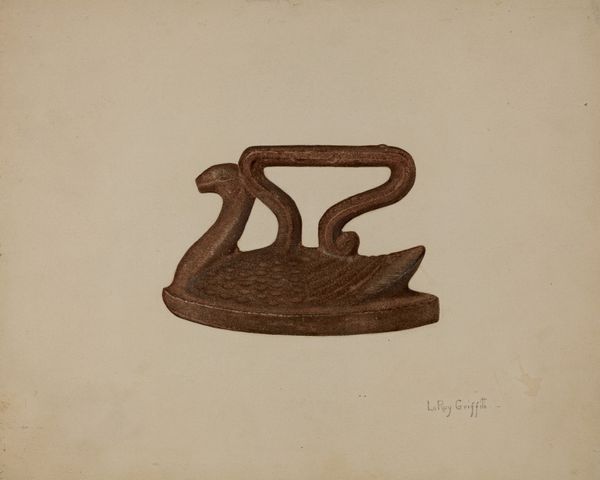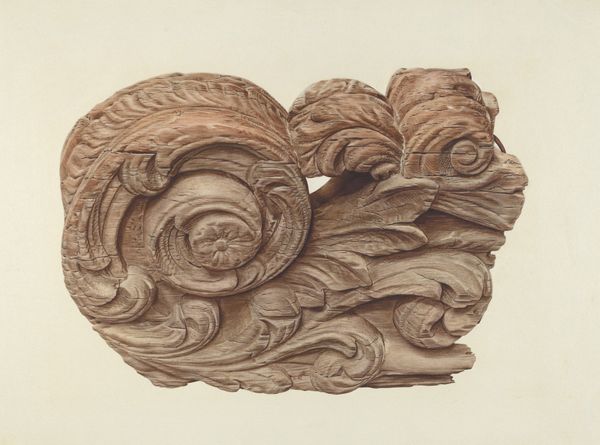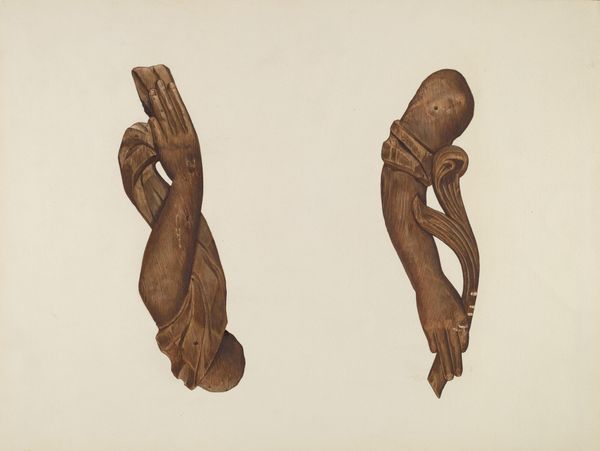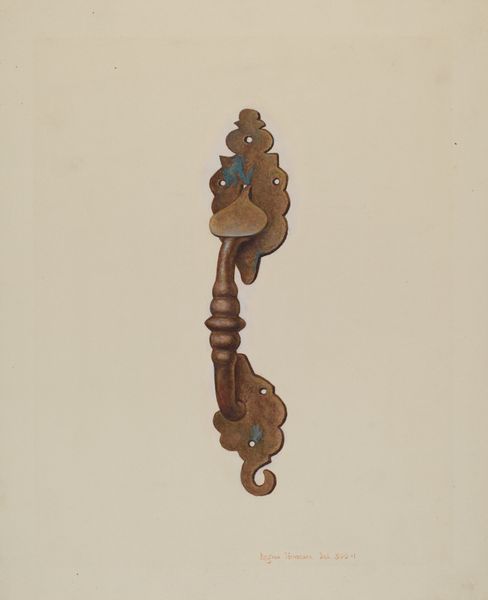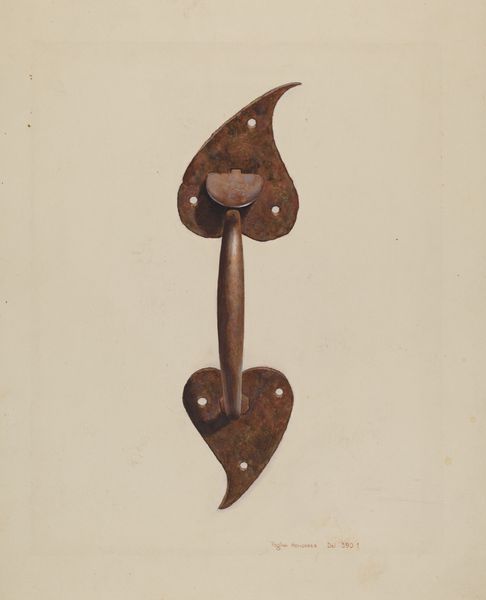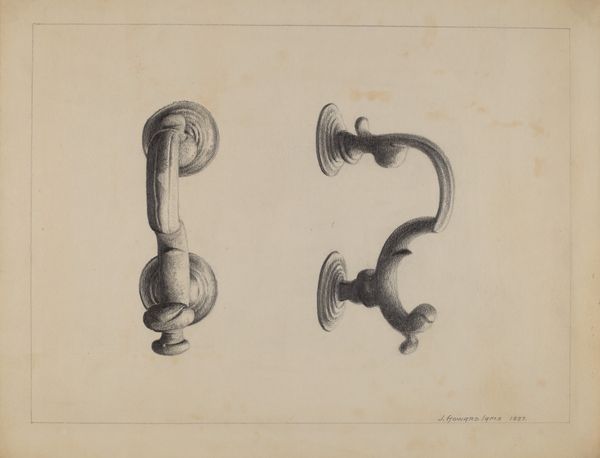
drawing, carving, wood
#
drawing
#
carving
#
wood
Dimensions: overall: 35.8 x 26.8 cm (14 1/8 x 10 9/16 in.)
Copyright: National Gallery of Art: CC0 1.0
Curator: Immediately, I'm drawn to its sense of incompleteness, like a fragment salvaged from a larger whole. There’s an inherent tension between the fluidity of its curves and the abrupt angles where it seems to have been deliberately broken. Editor: What intrigues me about this piece, titled “Wood Carving” by Gerard Barnett, made sometime between 1935 and 1942, is precisely that incompleteness. It's rendered through drawing, which captures both the illusion and the substance of the sculpture, highlighting that its creation emerged during the WPA era and The Great Depression when there were conversations about repurposing materials. Curator: Absolutely, I see echoes of art deco aesthetics in the streamlined form, but it feels almost… fossilized. Like a relic of a future that never quite arrived. Perhaps we are witnessing how this could have influenced what later generations began producing with wood mediums? Editor: That's a fascinating angle. Given the social and political context of the late 30s, I wonder if the work can be considered under the theoretical paradigm of deconstruction: of existing norms of the artistic language. In this era many queer identifying artists were seeking modes of artistic expression that rejected formalism and historical painting genres. Could we not, in seeing this "incompleteness", also read into Barnett’s own subjective agency? Curator: That could well be true! From a symbolical point, what really grabs me, though, is the way Barnett represents a kind of spiral within the sculpture, almost like growth contained, or perpetually beginning but never quite fully materializing. Editor: So, in this respect, the artwork's "unfinished" character acquires political importance. Given that these items were likely made at home for enjoyment during times of widespread struggle and limited resources, maybe Barnett intended the wood sculpture as a metaphor of resilience! Curator: It all contributes to this feeling that there’s a narrative implied but never fully unveiled. I find this incredibly poignant, as a viewer who is attempting to put it all together! Editor: As an exercise in understanding, it certainly succeeds. Its legacy lives on, then.
Comments
No comments
Be the first to comment and join the conversation on the ultimate creative platform.
